Major hits from the spatial residential category at the Designers Institute’s annual Best Design Awards.
Menzies Pop! House by Architects’ Creative
GOLD PINS — Residential architecture & Residential interior
Some would look at a small, derelict 1940s house and decide to demolish it. Christchurch’s Kate and Daniel Sullivan of Architects’ Creative opted to celebrate this in-situ concrete building’s unique character and work within the existing framework on a respectful refurbishment that has resulted in a comfortable, sustainable, high-performance family home.
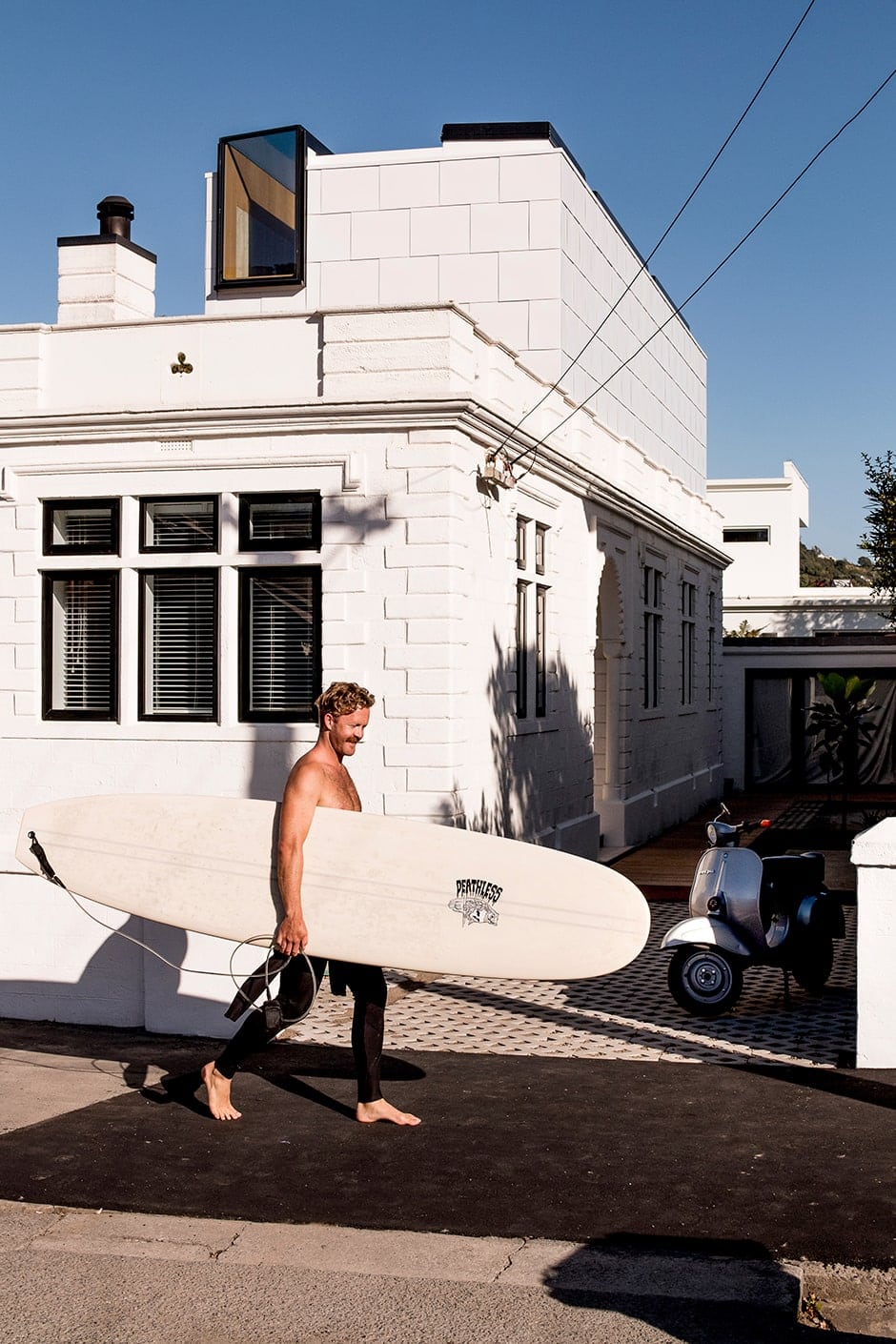
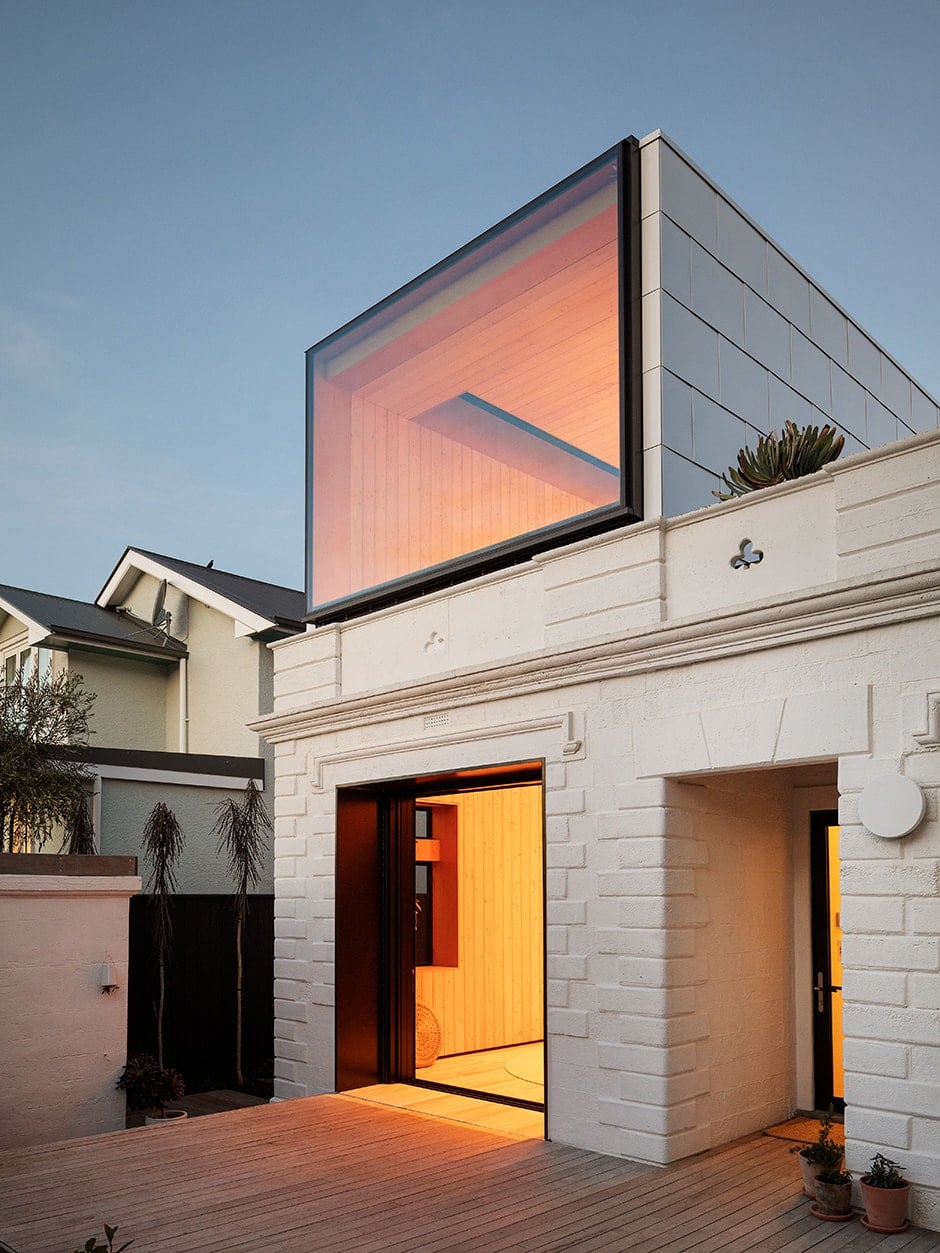

Driven by a desire for a social kitchen on the ground level (pictured at the top of this article), with lots of natural light and a physical connection to the landscape, the 120m2 footprint of this coastal Canterbury dwelling was cleverly replanned while embracing sustainable materials and systems. Repair of the original exterior, structural strengthening and service upgrades created a carefully considered and consistent composition.

Throughout the home, elements such as bandsawn larch linings and simple white walls work with the exposed concrete and rimu floorboards of the original home to add interest through shadow and texture. Similarly, adaptive reuse of the existing rimu bearers as the kitchen’s island bench combines with modern fittings to ensure cohesion between old and new.
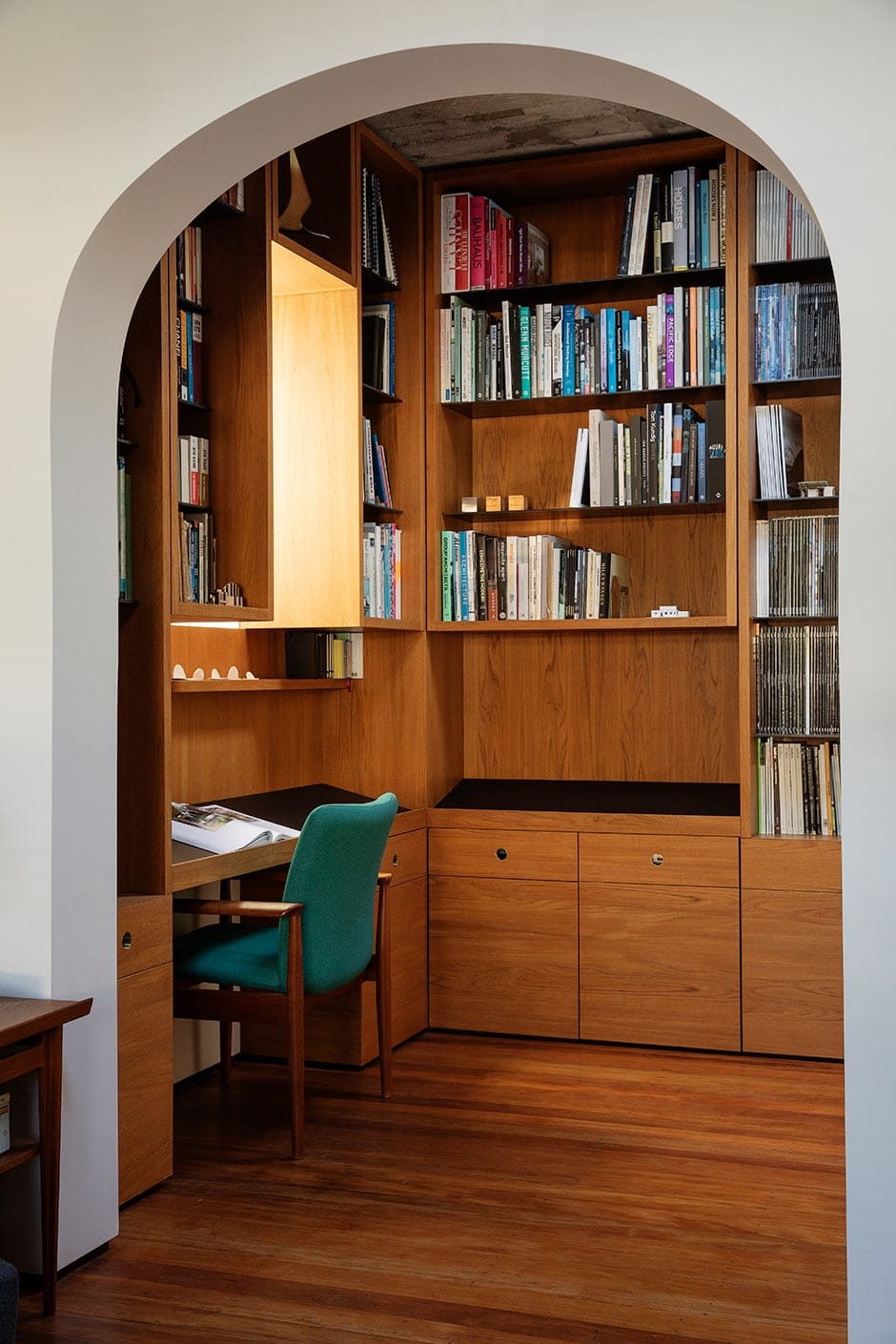

A generous double-height space over the dining area extends the home by just 20m2, with access provided via floating steel and brass stairs to a pop-up extension housing the master bedroom and ensuite, plus relaxed outdoor living on the rooftop beyond it. Expressed in a palette of warm, robust and enduring materials that add a subtle layer of patina to the interior, the finishes in this extension deliberately juxtapose the original.

Hidden Hills House by Warren and Mahoney
GOLD PIN — Residential architecture
Inspired by the design vernacular of the humble trampers’ hut, this sustainably built dwelling in Wanaka has been designed by Warren and Mahoney to nestle unpretentiously within the landscape and echo the outgoing and adventurous personas of its inhabitants. Like base camp
at the end of a long day’s tramp, it suggests a safe, welcoming space that has evolved in harmony with its surroundings.
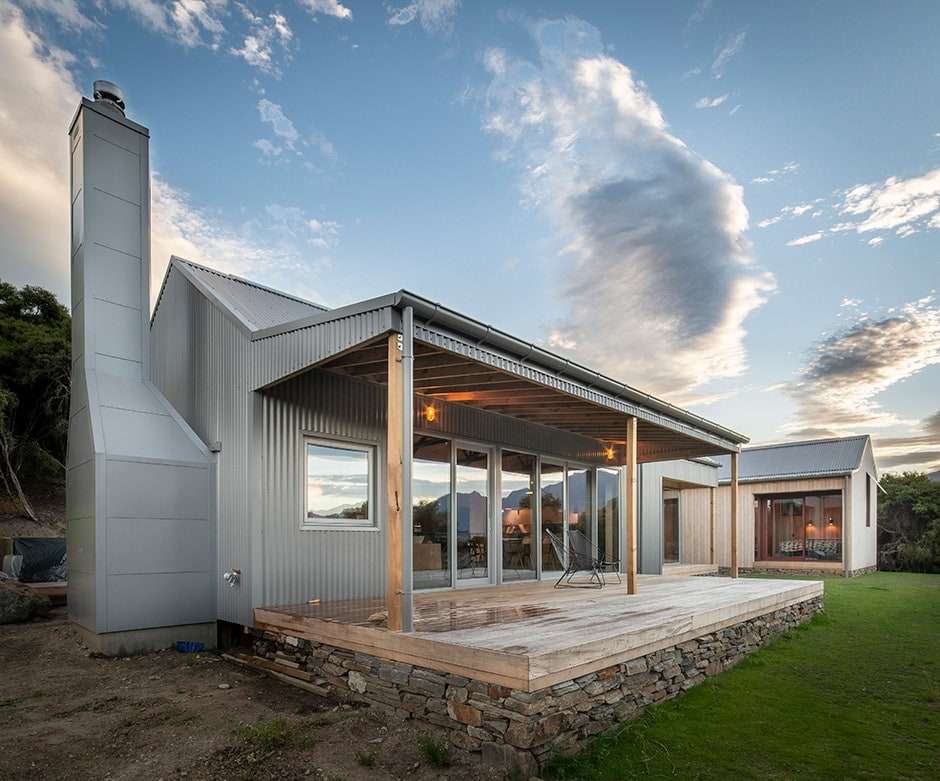
In addition to the material palette featuring New Zealand-grown Douglas fir weatherboard exterior cladding, unfinished plywood inside and steel surfaces, the hut motif is articulated through the home’s arrangement as a series of simple, separate forms that both minimise the visual effect the build has on the environment and create unique experiences as you journey from space to space and away from the main building to the separate guest hut. The bedroom hut also floats apart from the main living hut, connected by a quasi-open entrance link that creates the illusion of stepping outside.
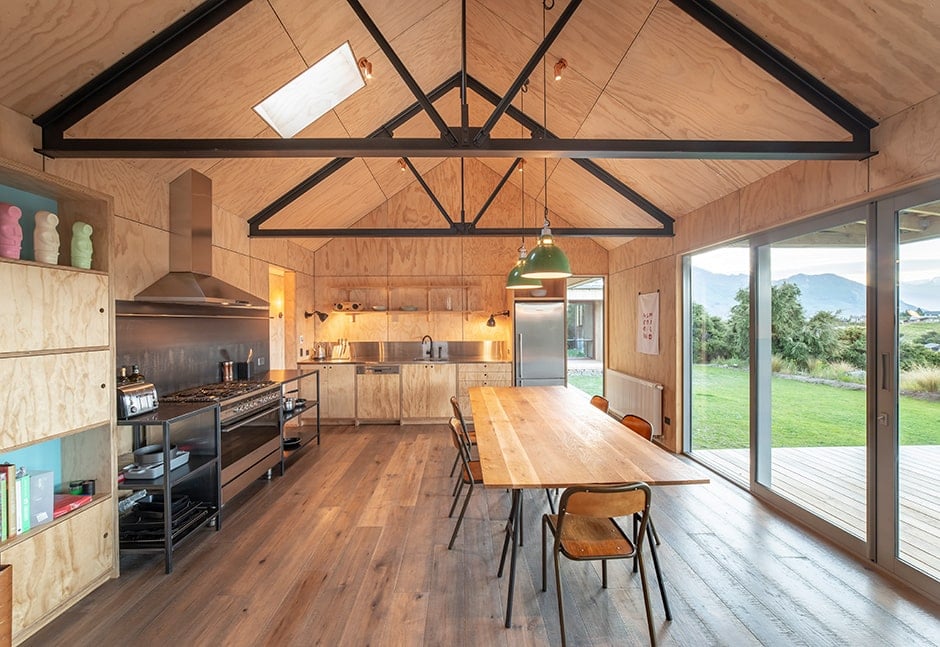
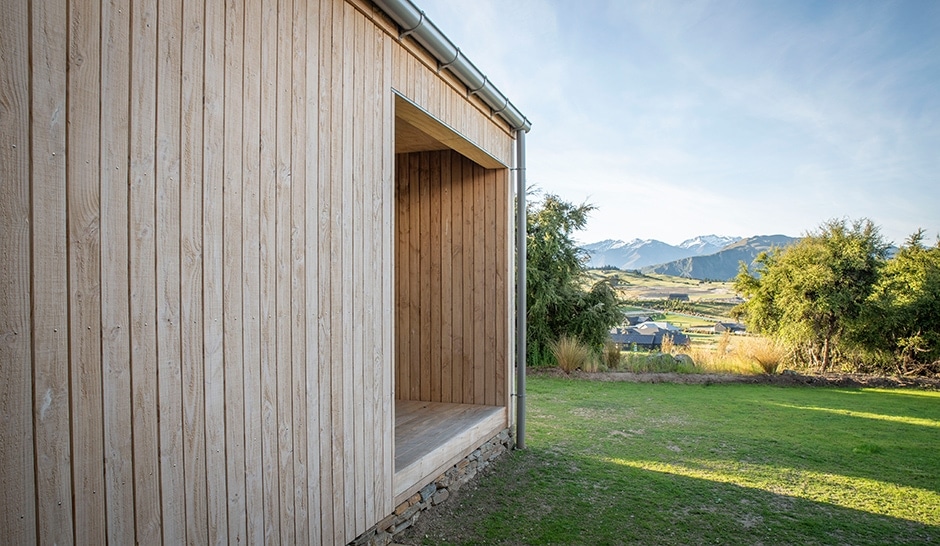
Combining with the sun, the primary heat source here is a cost-effective air-to-water radiator system that easily achieves comfort thanks to the home’s extensive insulation and the small size of its contained spaces.
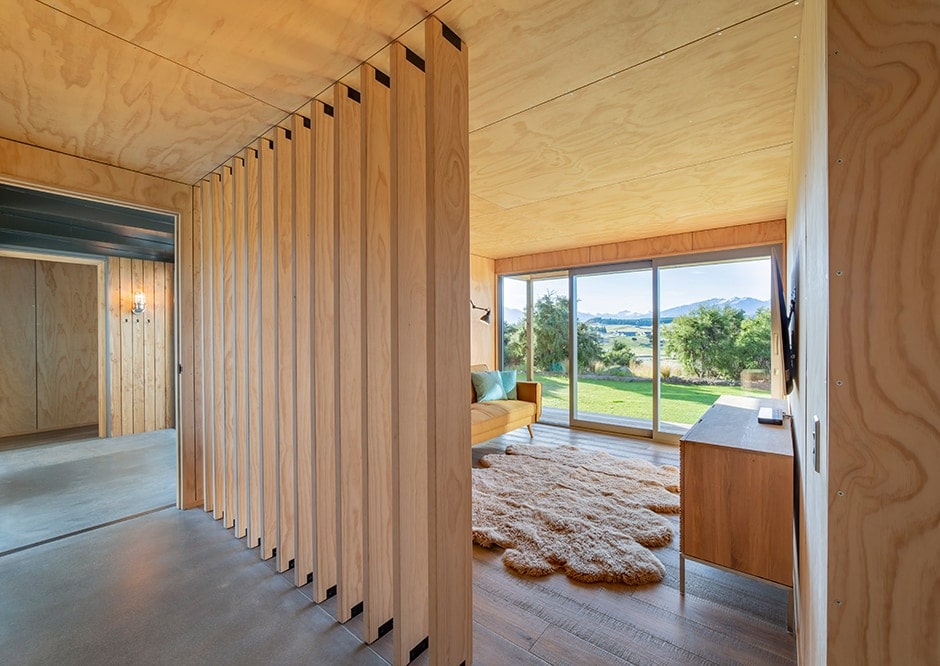
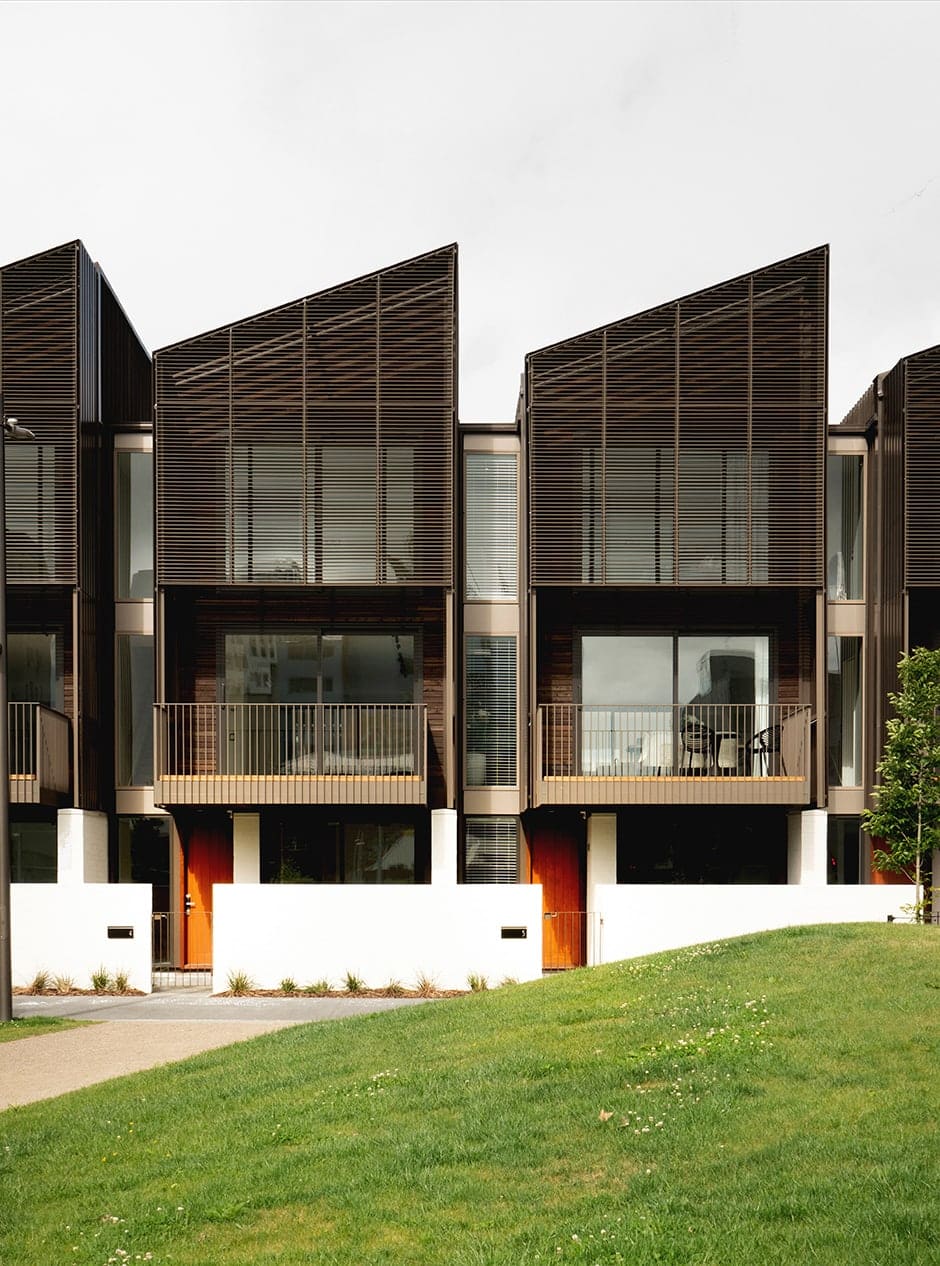
One Central/Latimer Terraces by Warren and Mahoney
GOLD PIN — Residential architecture
Latimer Terraces at One Central provides a powerful, aspirational architectural response to the challenge of returning people and vitality to the heart of post-earthquake Christchurch. Featuring delineated gable forms, voluminous spaces and private patios, the development by Warren and Mahoney succeeds in referencing the classic architectural style that was
threatened by the 2010 and 2011 quakes, while delivering the modern, medium-density housing the city needs to regenerate.
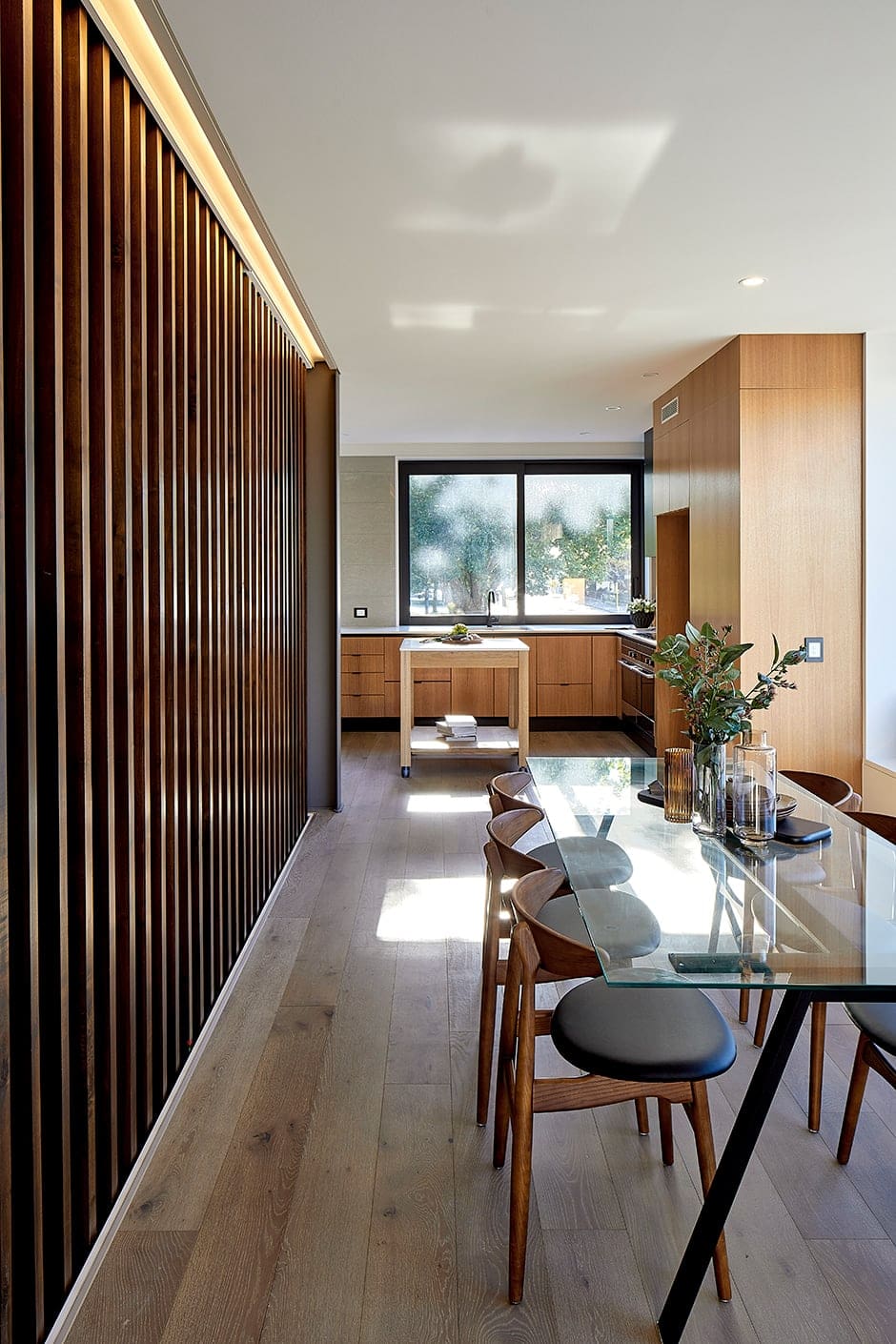
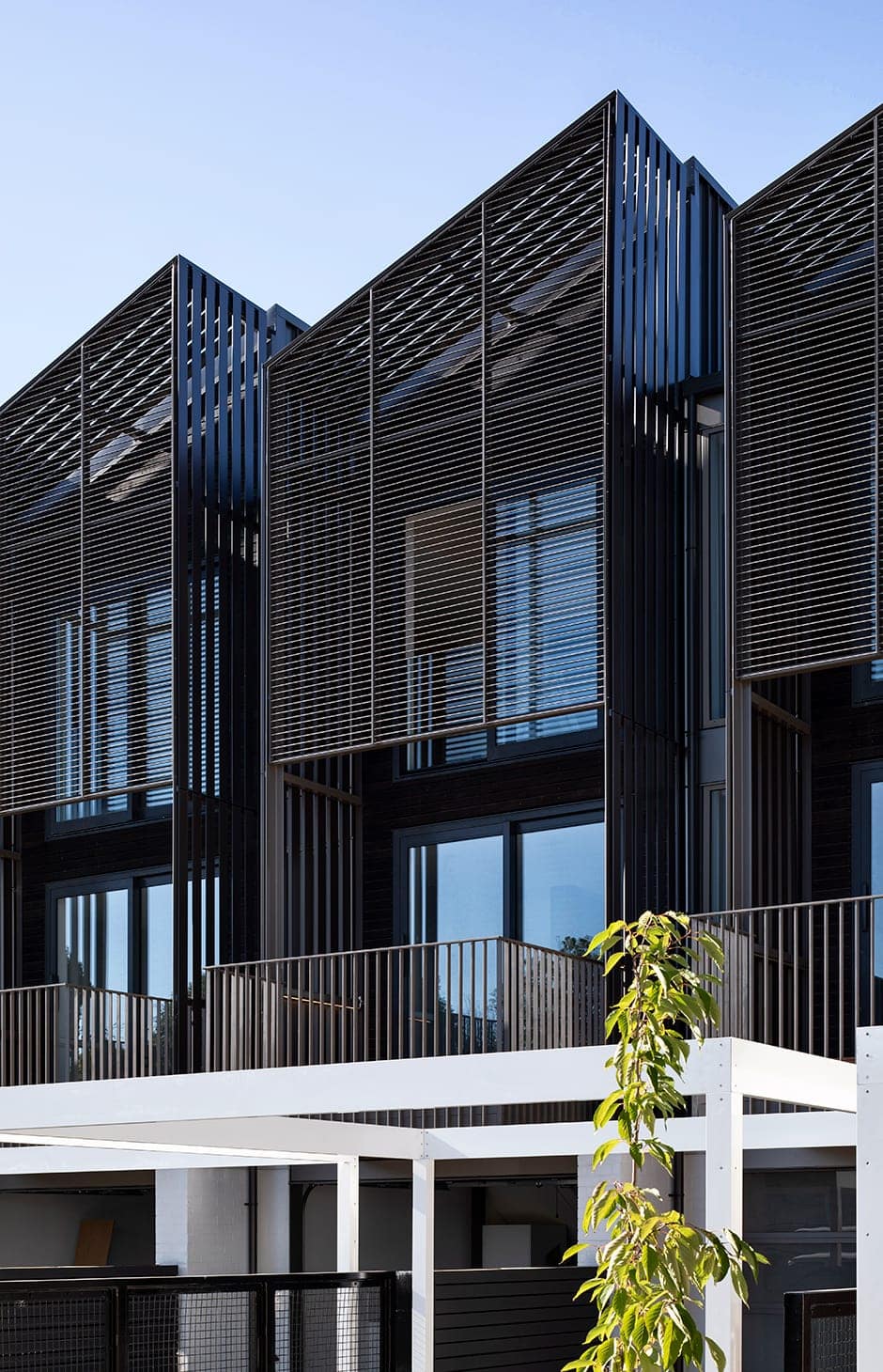
The three-storey terraces, which share a common courtyard that frames the neighbouring heritage Christchurch Club buildings, have been designed using sustainable principles, achieving
a 6 Homestar rating from the New Zealand Green Building Council.
Each of the six 5.8m-wide units and 14 4.5m-wide units includes open-plan kitchen, living and dining spaces, three bedrooms, an outdoor balcony and internal garaging. They also have Lifemark 4 certification, which future-proofs residents’ lifestyles and investment, and enables occupants in any stage of life to enjoy an exciting urban experience.
bestawards.co.nz

